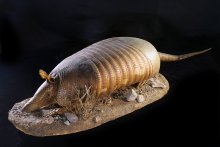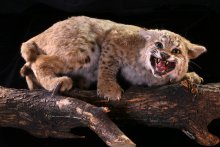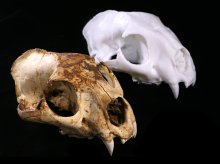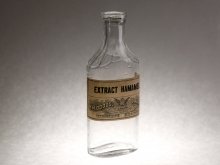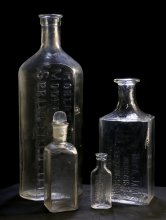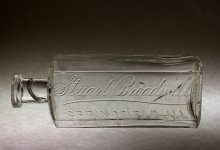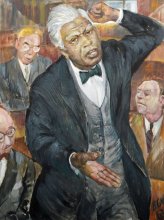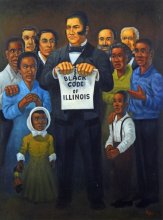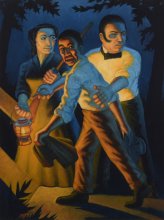Modern Era (1917-present)
The state’s Modern Era has been one of continued growth and change. Following World War I and the nation’s greatest economic collapse, public works projects of the New Deal put people to work on civic projects, such as building roads and infrastructure, and brought history to life by protecting a number of historic places around the state. The Federal Arts Program of the W.P.A. paid artists to create paintings, prints, sculptures, and murals for civic beautification, pride, and capturing the moment. Beginning in 1941, the state’s agricultural and manufacturing sectors and the sacrifices of citizen-soldiers played an important role in making the United States a leader on the world stage.
The Nine-banded Armadillo is native to Mexico, Central, and South America but has expanded its range north into the southern United States. They first appeared in Texas in the mid 1800s and were also introduced into Florida by about 1900. Now Armadillos are being seen more frequently in Illinois as they slowly push northward.
The Bobcat was nearly eliminated from Illinois by the mid 20th century, landing it on the state list of threatened and endangered species from 1977-1999. Today, Bobcats have been documented in every county but are most numerous in the southern half of the state. They are secretive, mostly nocturnal hunters that prefer forest environments for cover. They can be up to three-and-half feet long (including tail) and weigh up to 40 pounds (but averaging 22 pounds), making adult Bobcats larger than even the biggest house cat.
Settlers pouring into Illinois drove large carnivores like Black Bears, Cougars, and Wolves from Illinois by the mid to late 1800s. The skull of a Cougar (Puma concolor), pictured here with a replica created by 3D scanning and printing, was found dead in Randolph County in 2000 after it had been hit by a train. This was the first record of a Cougar confirmed in Illinois since the species was extirpated more than a century before. When an animal is no longer found in a particular state or region but persists elsewhere, it is considered extirpated but not extinct.
This bottle bears a paper label, likely similar to those originally affixed to many other bottles in this group. The contents are identified as extract Hamamelis, the genus of the plant Witch Hazel. Native Americans used parts of the Witch Hazel plant to treat skin ailments, and traditional medicine practitioners later picked up on its soothing properties. Witch Hazel is still in use today.
While the oval shape and reinforced lip finish of this bottle are typical for drug bottles of the time period, its large size is not. What sort of medicine was sold in this quantity is unknown. The bottle was made for Clark’s Drug Store, in Springfield, Illinois, at 213 South Sixth Street. Robert Clarkson operated the business from 1906 to 1930. A newspaper advertisement announcing the opening of Clarkson’s “New Modern Drug Store” states that “Mr. Clarkson needs no introduction,” having "previously worked as a prescription clerk at Stuart Broadwell and as a partner in Clarkson & Mitchell’s Drug Store.”
Close inspection of a bottle produced for sale at the Stuart Broadwell Drug Store in Springfield, Illinois, shows the minor imperfections and bubbles in the handmade blown glass. Whitall, Tatum Co., of Millville, New Jersey, manufactured the bottles with the druggist’s name embossed on the side.
Barack Obama served as the 44th President of the United States from 2009 to 2017. He was also the first African American to assume the presidency. Previously, Obama served in the Illinois State Senate from 1997 until 2004 and then as United States Senator from Illinois from 2005 to 2008.
This is a portrait of Congressman Oscar de Priest (1871-1951), an outspoken critic of the segregation of minorities in government. De Priest was not the first African American to serve in congress, but he was the first in the 20th century and the single minority voice for three decades. De Priest understood that he represented not only his Chicago district but the entire black population of the United States.
When Illinois entered the Union in 1818 as a free state, vestiges of slavery still existed, and African Americans lived under restrictive laws that limited their freedom. These laws, commonly called the Black Code, denied them the right to vote, assemble in groups, testify in court, or bear arms.
John Jones arrived in Chicago with his wife, Mary Richardson, in 1845. He was a self-made man with no formal education who went on to develop a thriving tailoring business, invest in real estate, and by 1860, become one of the nation's wealthiest African Americans. In 1871, Jones was elected the first African American Commissioner for Cook County.
Pages






